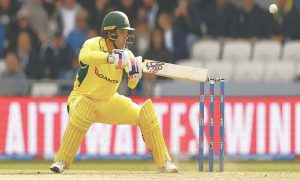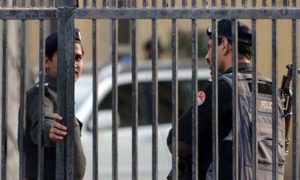
Weeks after Gov. Kathy Hochul abruptly pulled the plug on New York City’s congestion pricing program, state lawmakers have privately begun an informal campaign to persuade her to move ahead with the tolls, but make them less expensive.
In a series of recent conversations, the legislators suggested to Ms. Hochul that she could bring back a modified form of the initiative, which would have been the nation’s first central business district tolling program.
If the governor agreed to reduce the yearly amount of money that the law requires to be collected from the tolls, she would have some cushion to alter the program — potentially lowering the proposed $15 charge to enter Manhattan below 60th Street.
“I’ve personally urged the governor to mend it, not end it,” said Brad Hoylman-Sigal, a state senator representing a Manhattan district much of which is within the proposed congestion zone. “I think there could be an appetite among my colleagues to adjust the toll and other features of congestion pricing while approving additional revenue to make up the shortfall to the M.T.A., but only if the program is allowed to proceed.”
The ambitious but contentious program had the twin goals of generating billions of dollars for the region’s transit system and cutting congestion in Manhattan.
But on June 5, less than four weeks before it was to go into effect, Ms. Hochul indefinitely paused it, seeming to consign the plan to New York’s trash heap of ambitious, abandoned projects.
By that point, the state-controlled Metropolitan Transportation Authority had already allocated roughly half a billion dollars for tolling infrastructure in anticipation of the program’s June 30 start date.
The authority, which runs the city’s subways, two of its commuter rails and many of its bridges and tunnels, has said the governor’s pause endangers the extension of the Second Avenue Subway into Harlem, the installation of modern signaling systems and dozens of planned renovations to make the subway more accessible to people with disabilities.
While Ms. Hochul’s surprise move has won plaudits from some politicians outside Manhattan as well as on Long Island and in the Hudson Valley, where transit options are more scarce, it has also rocked broad swaths of New York civil society, which had been working toward congestion pricing for decades.
The 2019 legislation that enabled congestion pricing in Manhattan south of 60th Street required the authority to raise enough from the tolls to support $15 billion in debt. To achieve that toll revenue, estimated at $1 billion, the authority’s Traffic Mobility Review Board recommended a $15 peak charge for many drivers entering the congestion zone.
“We landed on that with virtually no exemptions because that was required to meet the legislative mandate of $1 billion a year in revenue,” said Kathryn Wylde, the chief executive of the Partnership for New York City, a business group, and a member of the traffic mobility board. “The point is, we didn’t have any choice, and we did everything possible to keep the tolls low.”
Whether Ms. Hochul would be open to amending the law in such a way is not clear. In the weeks since she instituted the pause, she has repeatedly raised concerns about both the notion of charging drivers to enter the city and the $15 price tag.
“I will say right now $15 is not the right price,” she said in an interview with CNBC. “That does not mean it’s gone forever, but let’s just be reasonable.”
A spokesman for Ms. Hochul on Friday had no comment on the latest round of discussions.
Reducing the toll revenue target would require an act of the Legislature, which is not scheduled to meet again until January 2025. Ms. Hochul has the power to call lawmakers back to Albany for a special session, but such a move would be politically risky without assurances from legislative leaders of broad support.
Liz Krueger, another state senator from Manhattan, said the governor did not rule out the idea of lowering the revenue target.
“I said I could be open to reviewing an alternative that started at a lower rate for some period of time, with every other box checked for decreased congestion, environmental standards, meeting federal requirements, etc.,” Ms. Krueger said. “The governor has yet to offer any such proposal.”
Scott Rechler, a developer and former authority board member, made a similar argument in an opinion piece he wrote in The Daily News last week with David Garten, a board member of the Regional Plan Association.
“The program that Hochul paused required the M.T.A. to raise $1 billion annually with limited flexibility or room for exceptions,” they wrote. “A more gradual approach could begin with targeted measures, such as charging commercial trucks or slow-moving tour buses.”
They continued, “By learning from London — the first city to implement congestion pricing with an initial fee that was half the $15 charge for passenger vehicles proposed today, we could start with a much smaller fee to build wider support.”
Lowering the tolls would most likely mean less revenue for the transportation authority; lower tolls might also be less of a deterrent to drivers thinking of motoring to Manhattan — potentially undercutting the dual goals of revenue generation and traffic reduction.
“I think it’s a terrible idea,” said Sara Lind, the co-executive director of Open Plans, a nonprofit that supports a more pedestrian- and cyclist-friendly city. “It’s just not enough money for what the M.T.A. needs.”
Ms. Lind added, “In order for congestion pricing to work and become popular, you need it to actually reduce congestion.”
Publicly, Ms. Hochul has sought to play down both her decision to pause congestion pricing and its ramifications.
When she announced the pause, via a pretaped address, she said she was concerned about ensuring New York City remained affordable for “everyday New Yorkers,” in light of inflation and Manhattan’s struggle to recover from the coronavirus pandemic. She cited conversations she said she’d had with New Yorkers in diners.
But congestion pricing supporters noted that most New Yorkers commute to Manhattan by transit, and the minority who drive are wealthier than those who do not. The plan would also have included exemptions for some low-income vehicle owners.
Last week, when the transportation authority board met to discuss the impact of the funding loss, Ms. Hochul released a lengthy statement insisting that she has always prioritized the authority and was working with it and the Legislature “to implement comprehensive solutions and ensure appropriate funding sources in next year’s budget.”
Both Ms. Lind and Ms. Wylde noted that negotiations for next year’s budget, which is due April 1, might be too late. Former President Donald J. Trump has said that if he wins November’s election, he will halt congestion pricing in New York City.
“By next April, if Trump is president, congestion pricing will be dead already,” Ms. Lind said.






